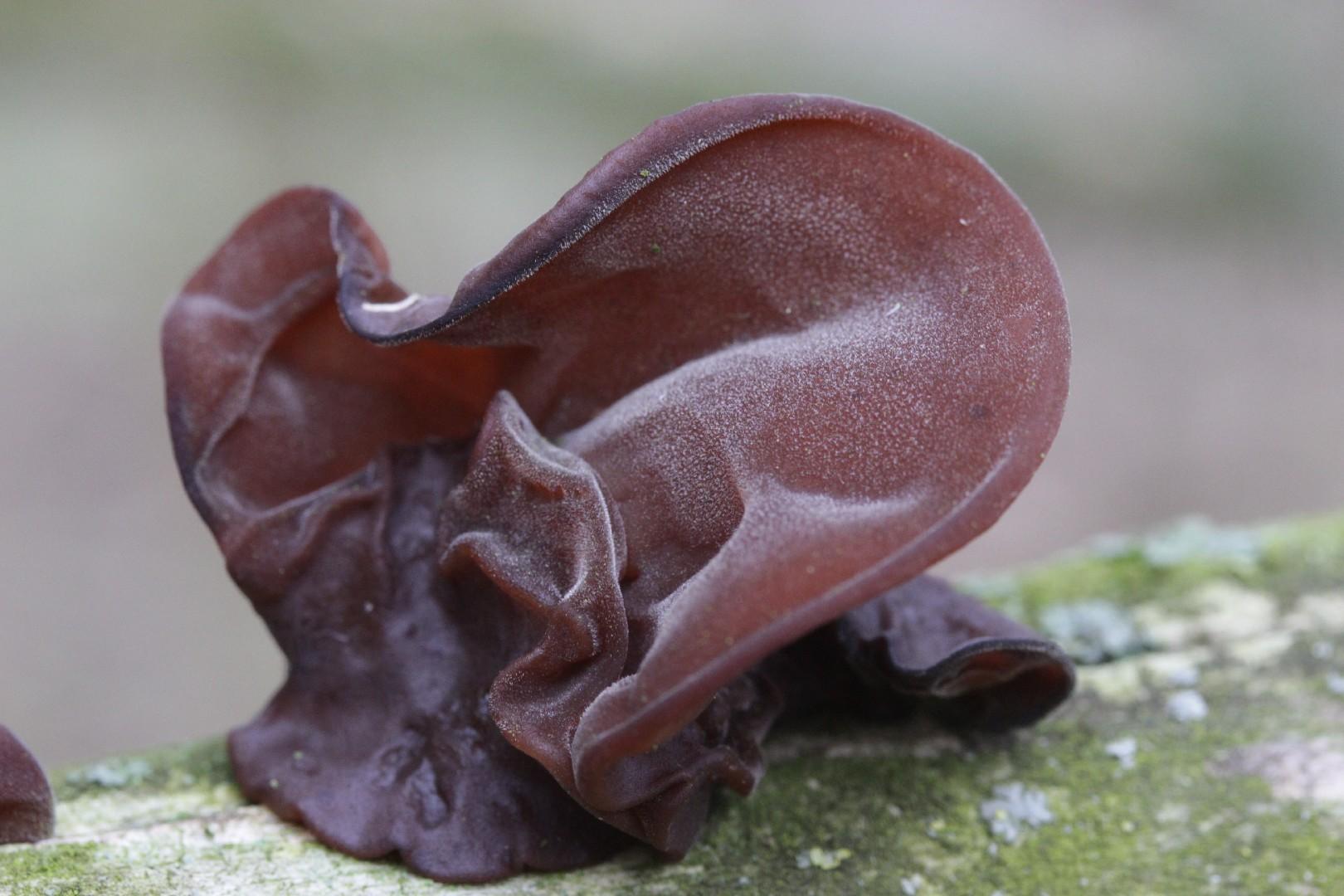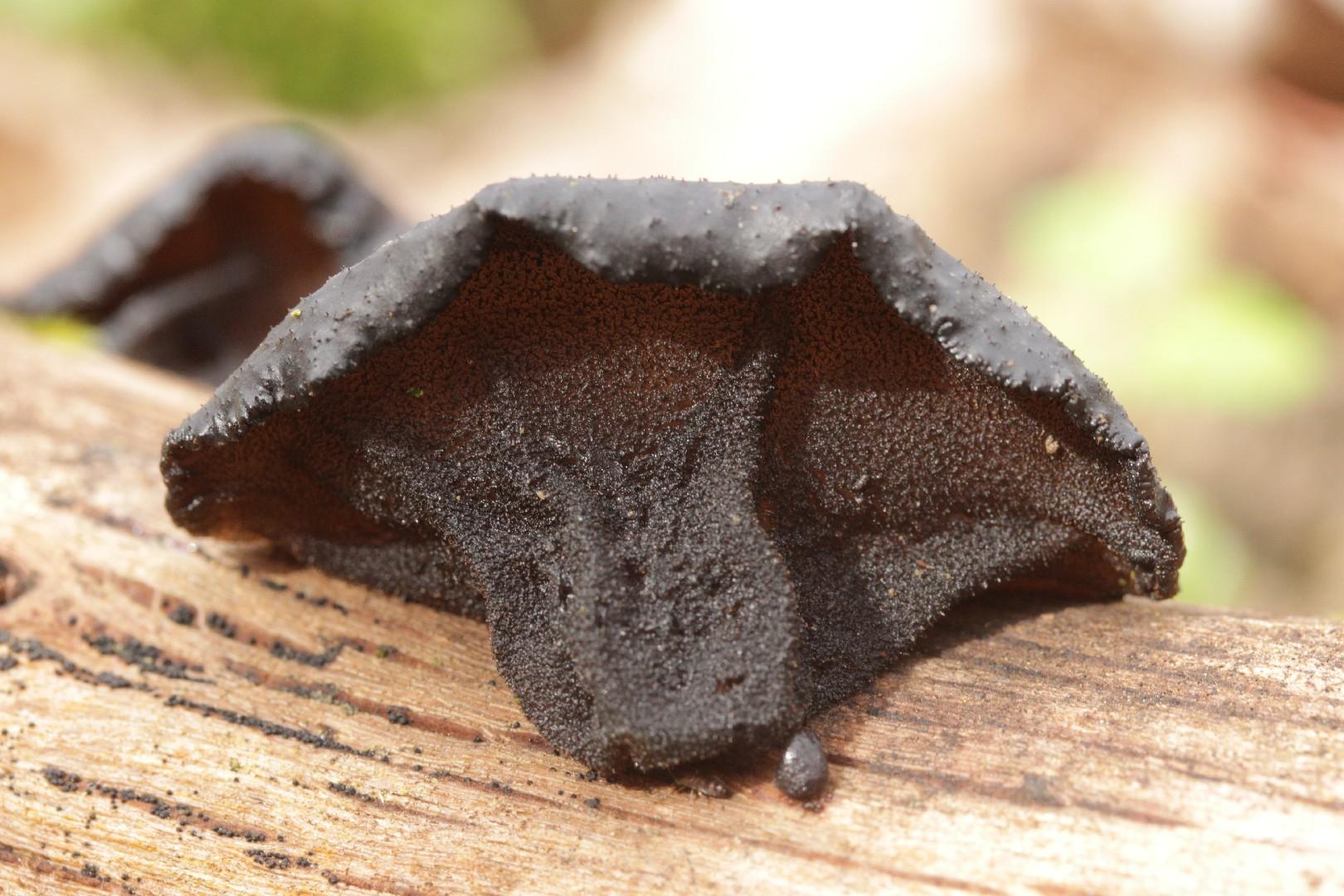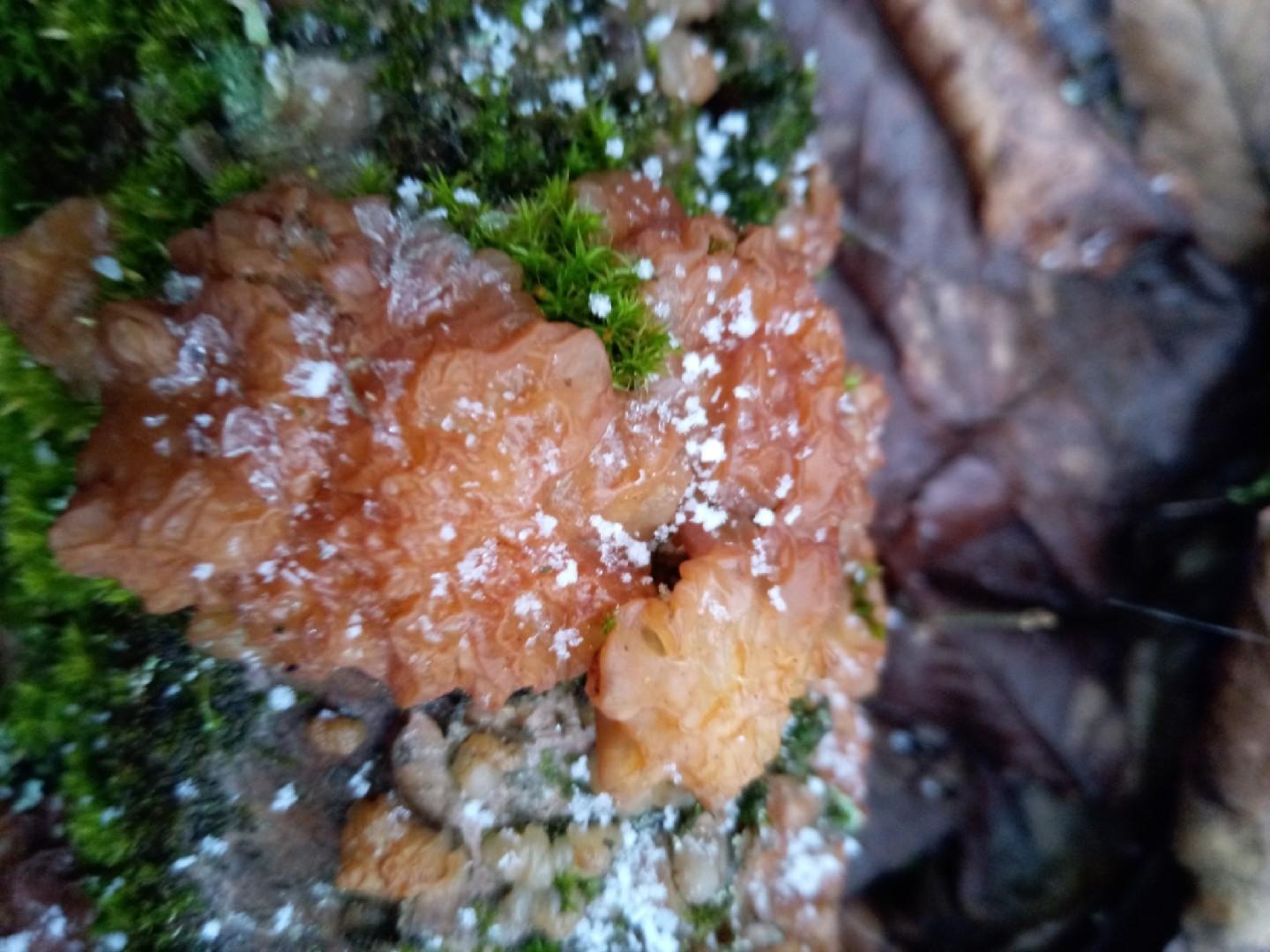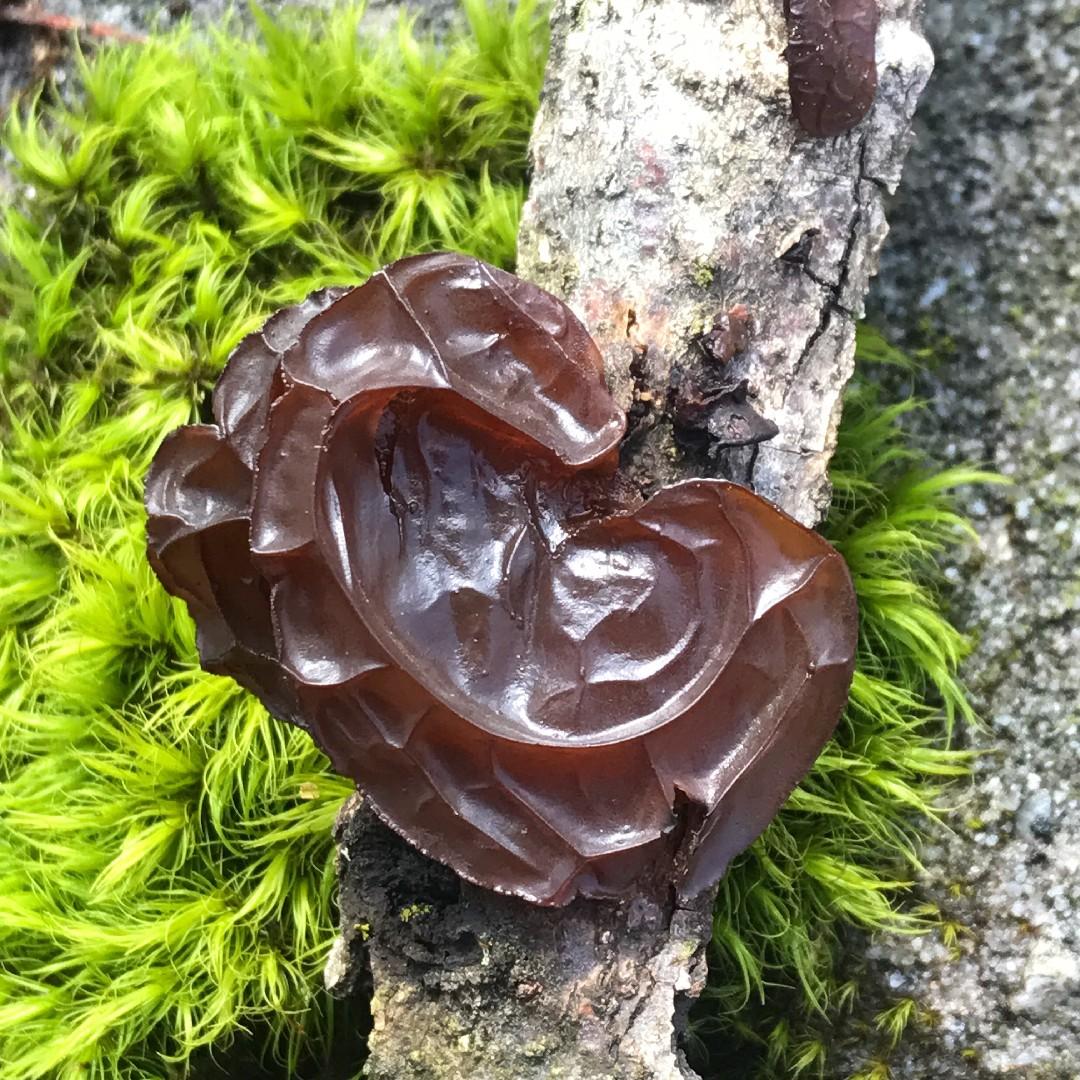

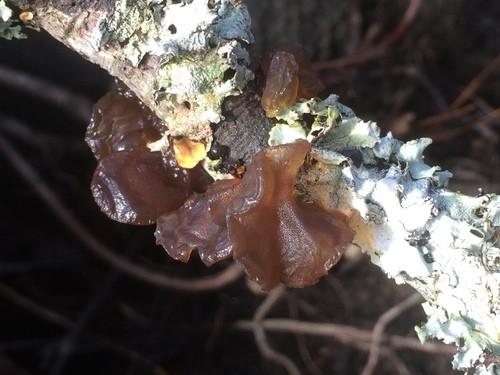
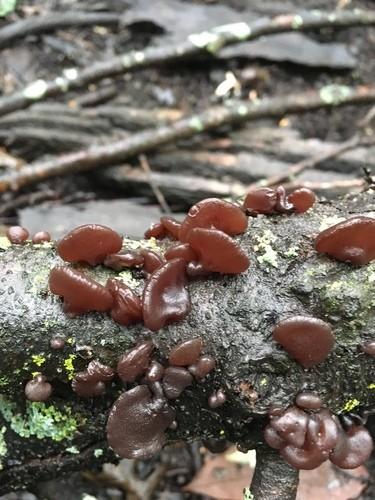
Amber jelly roll
Exidia recisa
A species of Exidia. Also known as Willow brain.
The willow brain fungus is aptly named due to its brain-like appearance. This species, scientifically known as Exidia recisa, commonly grows on willows and is characterized by a folded, gelatinous fruiting body. It thrives in damp conditions across North and Central America, Europe, and Asia.
Attributes of Amber jelly roll
Cap Diameter
1 - 4 cm
Height
5 - 15 mm
Cap
Individual 1 - 4 cm across; gelatinous; dark browm; blackening along the edges and ridges when dried out
Flesh
Slimy or sticky
Spore Print Color
White
Odor
Mildly mushroomy but not distinctive.
Body Color
BrownBlackPurple
Flesh Bruises
The flesh or milk does not discolor when bruised or cut.
Growth Form
Scattered, Gregarious
Nutrient Gathering
Saprophytic
Substrate
Dead Woods
You can find Amber jelly roll by these plants
Black cherry, Willows, Grey willow, Goat willow
Occurence Habitats
Deciduous Woodland
Species Status
Apparently widely distributed
Endangered Species
No
Scientific Classification of Amber jelly roll
Phylum
Club fungi
Class
Mushroom-forming fungi
Order
Auriculariales
Family
Auriculariaceae
Genus
Exidia
Toxicity and Edibility of Amber jelly roll
Is Amber jelly roll Toxic?
Toxicity information is not available for this mushroom. Always consult with an expert before consuming any wild mushrooms.
Is Amber jelly roll Toxic to Dogs?
Amber jelly roll can be dangerous to dogs. If your pet has consumed this mushroom, seek immediate veterinary attention. Symptoms may vary, but early intervention is crucial for the best outcome.
